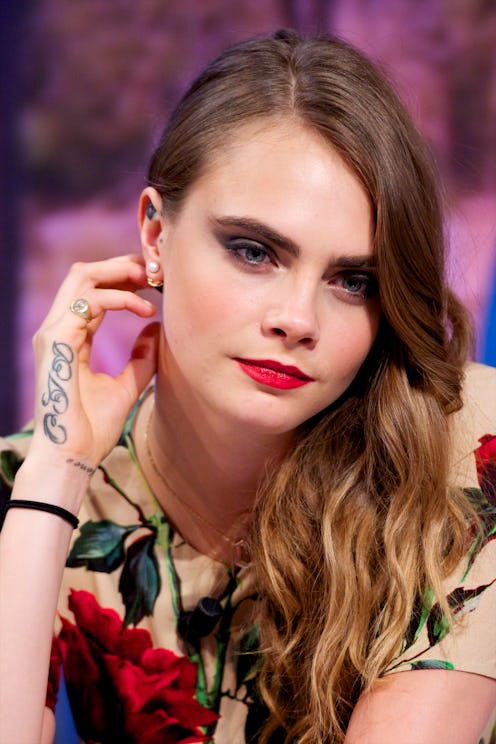Entertainment
These Are The Best Fonts For Tiny Tats
Small tattoos are the gateway drug to the world of tattoo artistry. Whether it’s your first piece of ink or a baby step to a full sleeve, a small tattoo can be a killer way to commit to ink. Small tattoos carry an infinite amount of meaning, especially for a first tat. Getting inked up in words is obviously a popular thing to do. But what exactly is the best way to tattoo those little letters? There are a million and one types of fonts you could go with — and with the sensory overload hurricane that is Pinterest, it’s daunting to narrow it down.
I chatted with some tattoo artists who offered me up their expertise. The consensus? Well, your typical “font” might not be the best go-to afterall. Here’s why.
“Many people use script or classic tattoo fonts,” says Lalo Yunda, of Lalo Tattoos in New York. “But the computer ones are boring. They have no character.” So, yeah, they work, but they aren't super original. Instead of your typical font, Yunda recommends getting words in something a little more personalized.
“The best font ever is the person’s handwriting — the client’s handwriting,” he said. “If you just want a little personal statement, your own handwriting is good.”
It’s the ultimate mark of originality: No two handwritings look alike. Does it get more personalized than that?
Julie Bolene, a tattoo artist at American Electric in Los Angeles, also recommends the handwritten route.
“Handwritten and cursive are what I always try to encourage people toward,” she said. "Standard fonts just don’t provide tasteful tattoos — especially because those computer-created fonts are hard to replicate precisely by a human."
“The eye immediately goes to the flaw,” she said. “Anything with even lettering starts to look strange once your skin ages or sags.”
When the tattoo is healing, the ink bleeds outside of the lines. So if the font lines are too close together, they might wear into each other and render the tattoo illegible.
Celeb tattoo artist Keith “Bang Bang” McCurdy of Bang Bang Tattoos in New York City knows a thing or two about small tattoos: He’s the mastermind behind Cara Delevingne's ever-famous lion finger tattoo. He tattooed Justin Bieber on a plane. Most recently, he inked up Kylie Jenner — who tatted him back in return. Pretty hardcore stuff.
McCurdy tells me that he uses custom fonts for his clients. Instead of scrolling through go-to Word fonts, he customizes the lettering so the tattoo radiates originality. The artist shows the client examples of fonts, and together, break it down by what the client likes and what will work best for the tattoo spot and size. McCurdy will then take that more standard font in PhotoShop to manipulate it. So, even if two clients start out liking the same font, what ultimately gets tattooed is different on both people.
However, McCurdy says that if he had to pick one specific font, it would be Times New Roman: simple and classic. But more than a single font, he recommends picking something that’s not too dense or too bold.
The placement of the tattoo affects what fonts work well, too. All artists agreed that flexible, moving parts of your body — think fingers, feet, elbows, and knees — are harder to tattoo and are less capable of holding a sharp line over time. And yet again, there’s no single font or face that works best — it all depends on what you want and what your artist recommends. Seriously, whoever's inking you up will be able to make the perfect call for your particular artwork.
The ultimate takeaway? Be flexible. Yunda specifically emphasizes this: You’re more likely to walk away with a killer tattoo you’ll love forever if you’re willing to listen to the experts and play around with the placement, font, and size.
“Go with an open mind. Tell your artist what you want, but be open,” Yunda says. “Do your research [on artists and tattoos]. Like if you were gonna get a nose job, you wouldn't go just go for it. It should be the same with tattoos. Small tattoo, big tattoo — every tattoo should be treated with respect, both from the artist and the person who's getting it.” Truth.
Images: Rosanne Salvatore/Bustle
